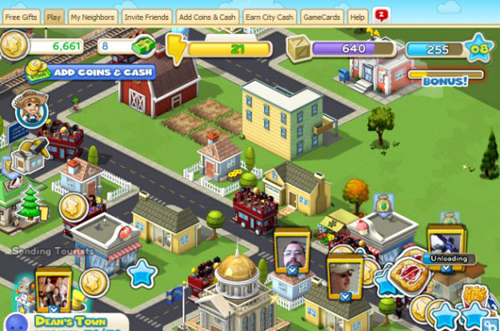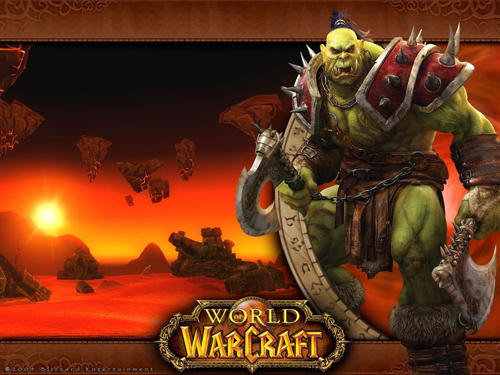CrowdStar前设计师观点:新时代的社交游戏需找准定位
游戏邦注:本文作者是社交游戏开发商CrowdStar前设计师布莱斯·莫里森(Brice Morrison)。
商品无一例外都是产品;油,粮食,黄金就是再普遍不过的例子。它们没有绝对优势,没有特殊功能,不是名牌产品,或者也不是消费者最喜爱公司的产品。消费者购买商品完全取决于价格;越便宜越好。A产品比B产品便宜,这是就是他们消费考虑的优先条件。
据游戏邦了解,早期的Facebook游戏生态圈也是由许多商品、游戏构成的,这些东西归根到底都是一样的。 就像《Farm Town》和 《FarmVille》,《Mobsters》和《Mafia Wars》,《Happy Aquarium》和《FishVille》,以及其他无数的游戏一样。这让许多玩家(和开发商)对这一平台的最初情况感到困惑,“就是这些了吗?廉价游戏的翻版?”在早期的用户抢夺大战中,传播就是王道,独具匠心的游戏功能可以虏获无数的用户,开发商争相以最快的速度争取用户,尽管这些游戏都差不多,但谁也不清楚大家为什么不玩自己原先找到的那款游戏。
但是随着时间的发展,Facebook平台和游戏玩家都成熟了,商品游戏已经过时了。过去的游戏很简单,而且容易复制,但由于产品价值的飙升,如今的游戏要成就一番事业,就需要有庞大的团队投入充足的时间,通过仔细揣摩原始游戏的设计理念指导游戏开发工作。在这种高成本投入的前提下,用户对游戏的期望当然也随之飞升。
如今,我们正进入一个成熟的Facebook时代,游戏的成功与否不再仅仅取决于商品分销规则和营销力量,而是游戏特色、娱乐性以及顾客忠诚度。没有用户会想玩水准接近于《CityVille》的游戏——他们就是要玩《CityVille》。以往的游戏可能大同小异,而如今的游戏需要别具一格,未来亦是如此,玩家是通过对比来选择玩什么游戏。
那么现在的游戏公司要怎么做呢?什么游戏才会引起用户的共鸣,什么游戏将被淘汰?以史为鉴,答案很明了,如今的Facebook生态圈正是过去掌机游戏市场的翻版。
早期掌机游戏时代的定位
任天堂娱乐系统(Nintendo Entertainment System )原来的开发商也是处于商品时期。当时开发成本很低,游戏平台和市场都是新兴事物,大家的创意换个包装后还是一样好卖。所有类型的公司都开发多种游戏,早期的玩家一开始都很乐意尝试眼前的东西。
回过头再去玩一些这一时期的游戏,你会发觉很有趣。有很多公司的名字你可能还认得:Konami、Capcom、 Enix。但也有很多你可能闻所未闻的名字:SOFEL、Electro Brain、或者Bullet Proof Software。有些公司在20年后雄风依旧,其开发的产品仍广受热捧,但有的公司却早已销声匿迹,或是勉强被收购,或宣布破产。
公司的成功与否当然还受到了一些外部因素的影响,但就开发团队创建的游戏类型来说,有的团队继续专注开发他们所擅长的游戏类型,而有的团队则通过推出新游戏,不断开拓新领域。只有专于开发某种游戏,并游戏设置独具风格,同时又拥有广泛的粉丝基础的公司才能处于不败之地。他们已经学会了如何从商品型游戏市场转向定位型游戏市场。
无法定位自己的公司最终会落于下风。“XYZ公司开发什么游戏呢?”“嗯,我们开发各种各样的游戏。”这可不是骨灰级玩家想知道的答案。虽然早期的平台并不要求明确的定位,因为那时的玩家不明白自己究竟偏好哪种游戏,但随着平台的成熟,明确发展定位将成为必然选择。
成熟的玩家知道自己想要什么,他们会说,“我想玩侧向动作的游戏;我想玩Konami的游戏。”或者有的玩家会说,“我想玩有竞争性的战斗游戏,我想玩Capcom的游戏。”找将准定位的公司将赢得大量的玩家,这些公司通过不断训练开发团队,从而得以在游戏平台上顺利运营。
由商品型转向定位型的案例:暴雪公司
据游戏邦了解,暴雪是世界公认的最成功的游戏公司之一,有许多游戏均取得巨大成功,如《魔兽世界》(World of Warcraft),《暗黑破坏神》(Diablo)和《星际争霸》(Starcraft)。然而就算是暴雪也并不总是一帆风顺的;早期的暴雪和其他公司一样,主要靠模仿。早期的暴雪就是靠像《单车竞赛》(RPM Racing),《象棋大战》(Battle Chess),《MicroLeagues Baseball》和《黑暗王座》(Blackthorne)之类的游戏勉强立足。这些游戏的风格特点都有其竞争对手的影子;暴雪对每种游戏均有涉猎,但并未在任何游戏上表现特别突出。
那么暴雪公司发生了什么变化呢?暴雪学会针对特定用户群开发游戏。暴雪公司的《魔兽争霸:奥克斯和人类》(WarCraft: Orcs and Humans)卖得非常好,超越公司以往的其他游戏。不够睿智的团队可能会认为这一成功得归功于营销,广告,或者运营策略。虽然这些因素确实起了一定的作用,但变化的关键在于游戏的设计:设计什么游戏,游戏如何操作,如何让游戏受玩家欢迎,暴雪团队对此一清二楚。
据游戏邦了解,该公司紧接着在1991-1994期间获得了一系列大大小小的成就,《魔兽争霸》游戏一出现,公司就开始排除万难专攻这一游戏:在线竞争游戏。接下来又陆续出现了1995年的《魔兽争霸2》,1997年的《暗黑破坏神》以及1998年的《星际争霸》(Starcraft),都是在线竞争游戏。通过专攻这一风格的游戏,精化制作,暴雪公司拥有世界上最好,最精的开发团队,其粉丝基础雄厚,并对这些游戏情有独钟。通过准确定位自己的方向,暴雪成了世界上最优秀在线游戏开发商,他们找到了自己的市场方向。
Facebook平台发展的周期循环
许多在早期取得很大的成功的开发商和设计者,最终都因为停滞不前和没有找准市场定位而沦为Facebook平台发展循环过程中的牺牲品,并为世人遗忘。那些能够发挥自己的长处,开发核心的游戏体验,找准用户定位的公司最后都将取得成功。
据游戏邦了解,越来越多的社交游戏公司已开始学习开拓自己的市场,提供其他公司所没有的游戏体验。Zynga努力成为大众休闲游戏市场的王者而且真的成功了,这些游戏主要是有深度的简易游戏,不是建造房屋,就是饲养动物和种植庄稼。PopCap延续了其开发优质游戏的传统,游戏很有深度,玩家只需执行少量操作就可以获得高分。Causal Collective则致力于成为开发暴力、男性化游戏的Facebook游戏公司。
此外,其他的公司还未找到自己的“专长”,就是他们最适合,最擅长的游戏类型。在他们找准自己的定位之前,其日活跃用户(DAU)将持续减少,因为玩家都流失到了其他更具有侧重性的游戏。随着时间的推移,越来越多试图复制他人成功模式的开发商将无法承受巨额的开发和广告费用。虽然这些策略在商品市场时期很可行,但在一个成熟的市场上却行不通,成熟市场的玩家都专注于自己喜欢的游戏,而且具有很高的忠诚度。(本文为游戏邦/gamerboom.com编译,转载请注明来源:游戏邦)
Targeted Positioning in the Age of Social GamesFebruary 10th, 2011
This is a guest post by Brice Morrison, former CrowdStar designer and editor of industry game design resource The Game Prodigy.
Commodities are products with no differentiation; oil, grain, and gold are some of the most common examples. There are no competitive advantages, no deluxe features, no brand names or favorite companies that consumers like to buy from. A commodity is bought by consumers based entirely on price; the cheaper the better. If A is cheaper than B, then that’s all the information that’s needed to make a purchasing decision.
The early Facebook game ecosystem was made up of many commodities, games that originally were exactly the same as one another. Farm Town and FarmVille, Mobsters and Mafia Wars, Happy Aquarium and FishVille, and countless others. It led many players (and developers) to be confused by the early platform, asking, “Is this all this is? Copies of cheap games?” In the early massive user-grab time period, where virality was king and hundreds of thousands of users could be gained by clever features, it was often a race to who could get to the user first.
It didn’t matter that the games were very similar; since it was hard to tell the difference, why not just play the one that you found originally?
But as time has gone on, both the Facebook platform and Facebook players have matured, and commodity games are no longer acceptable. As production values have skyrocketed, what used to be simple titles that could be copied in a few weeks have become massive undertakings, requiring dozens of developers, months of time, and careful understandings of the original game’s design. With these production costs, players expectations have risen as well.
Thus, we are continually entering an age of a mature Facebook market, where game success isn’t defined by commodity rules of distribution and marketing muscle alone. Instead, games are defined by differentiation, by a unique brand of fun, and by customer loyalty. No one wants to play the game that is 90% as good as Cityville — they want to play Cityville. While the games of yesterday appeared to be a crowd of clones, games of today and tomorrow look very different from one another and players are choosing what to play by comparison.
So what are today’s social game companies to do? What kinds of games will resonate with consumers, and what kinds of games will no longer work? Many of these answers can be provided by history, during a time when the game console market seemed very similar to today’s Facebook ecosystem.
Positioning in Early Console Days
In the early days of console games, developers for the original Nintendo Entertainment System were in a commodity-state as well. Development was cheap, the platform and market was new, and ideas were easily copied and resold as new ideas. All kinds of companies made all kinds of games, and early players were happy to try out whatever was in front of them…for the time being.
It’s interesting to look back and play some of the games from this era. Many of the companies names you may recognize: Konami, Capcom, Enix. But there are many other names you wouldn’t recognize: SOFEL, Electro Brain, or Bullet Proof Software. While one group lives on, producing products that players love twenty years later, the other group has disappeared into obscurity, either through reluctant acquisition or bankruptcy.
Of course there are always outside factors to the success of a company, but it is telling to look at the lists of games that each group of developers made. One group learned to focus their products into one type of game design they could be the best at, while the others continued to explore new genres with every release. Companies that learned how to create a specific type of a game, with a style of gameplay, a common fanbase, a unique art treatment, these were the companies that survived. They learned how to transition from a commodity-style game market to a positioning-style game market.
Companies that were unable to position themselves fell away. ”What kind of games does XYZ make?” ”Well, we make all kinds of games.” This isn’t what a mature player wanted to hear.
While that absence of positioning worked during the early days of a platform, when players were still exploring and learning about their own preferences, the strategy no longer worked as the platform grew older.
Mature players wanted a positioned product, they said, “I want to play an action side-scroller; I’ll go play a Konami game.” Or a slightly different type of player said, “I want to play a competitive fighting game, I’ll go play a Capcom game.” Each of these positions were taken up by a company that became dedicated to their differentiation, and captured large numbers of players in the process. And by training their development teams with each title to be able to deliver the best in that position, they allowed themselves to evolve successfully with the platform.
Commodity to Positioning Case Study: Blizzard
Blizzard is a company that is often cited as one of the most successful game companies in the world, citing massive success for titles like World of Warcraft, Diablo and Starcraft. However, even Blizzard wasn’t always successful; in the early days of Blizzard, it was a “me too” company just like many of the others. RPM Racing, Battle Chess, MicroLeagues Baseball, and Blackthorne were all early Blizzard titles which barely managed to keep the company afloat. These commodity titles all had similar game designs to competitors; Blizzard was mediocre at everything and master of none.
What made the difference? Blizzard learned to position their games. With the best selling “WarCraft: Orcs and Humans”, the game was a smash hit, far outselling any Blizzard title before it. A less wise leadership team may have decided that it was marketing, advertising, or business strategy that had resulted in the success. And while those undoubtedly played a factor, the key that made all the difference was the game design: what the game was, how it worked, and how players loved playing it. And Blizzard’s team understood that.
Thus, after a string of mild successes from 1991-1994, once WarCraft came out the company pivoted hard to focus entirely on creating one type of title: online competitive games. Warcraft II in ’95, Diablo in ’97, Starcraft in ’98. All competitive online titles. By focusing on one style of gameplay and mastering it, Blizzard created a development team that was the best in the world at what they did, and a rabid fan base that loved what no one else could deliver. By positioning themselves as the best developers of online competitive games in the world, they found their niche. The rest is history.
The Cycle Repeats with Facebook
The cycle of platform release, commodity products, and differentiated products has repeated many times. Each time, developers and designers that hit it big in the early stages but fail to evolve and differentiate themselves fall victim to the cycle and are forgotten. Companies that learn to develop their specialty, their core experience, and their specific type of player find wild success in the later stages.
You can see much of this playing out now, as many social game companies are learning to find their niches and deliver experiences that no other company can. Zynga is striving (and succeeding) to be king of the mass-market casual titles, simple games with great depth that focus on building, nurturing, and growing. PopCap is continuing its tradition of elegant games that involve only a few player actions and lead to great depth and high scores. Causal Collective is aiming to become a Facebook game company for violent and more male-oriented titles.
Other companies, on the other hand, have yet to understand what their “special sauce” is, the type of game that they are the best suited to make. And until they figure their position out,
DAU’s will continue to drop as players migrate to more targeted experiences. As time goes on, more and more developers that try to copy others will burn through millions in dev and advertising costs without much to show for it. While those strategies worked in a commodities market, it will not work in a mature market, where players are ready to settle down with their favorite game franchises and give their loyalty.(Source:Inside Social Games)









































 闽公网安备35020302001549号
闽公网安备35020302001549号